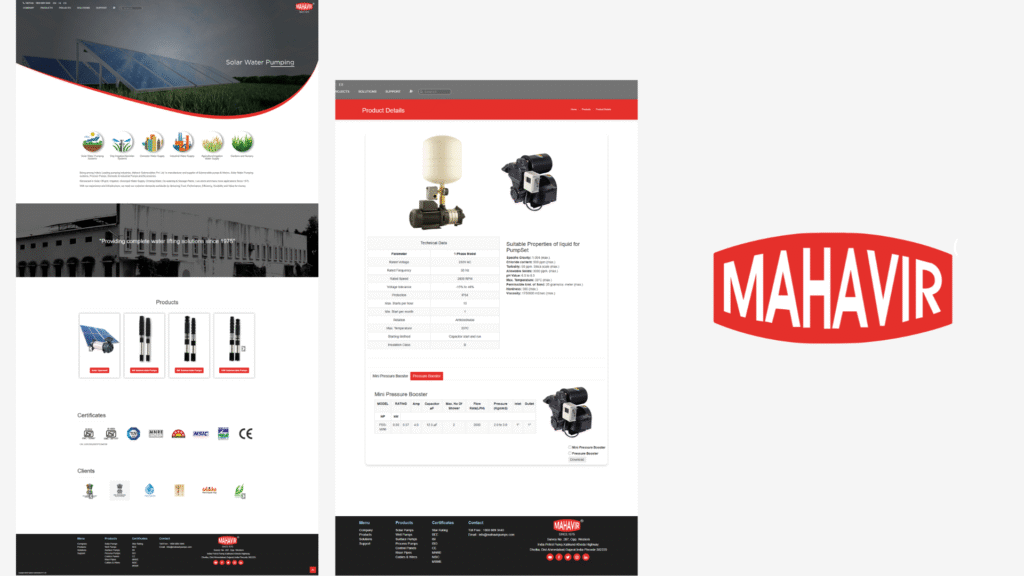React JS vs Vue JS in 2025: The Ultimate Comparison for Modern Web Development
In the rapidly evolving landscape of web development, JavaScript frameworks continue to shape how developers build dynamic, interactive, and efficient web applications. As of 2025, two giants dominate the scene: React JS and Vue JS. Both frameworks have matured significantly over the past years, boasting extensive communities, powerful features, and vibrant ecosystems. But which one is the best fit for your project in 2025? This comprehensive comparison aims to provide clarity by exploring their features, performance, ease of learning, scalability, and more.
Introduction: The State of JavaScript Frameworks in 2025
The JavaScript ecosystem has become more diverse and competitive in 2025. Developers now prioritize frameworks that provide ease of development, scalability, and performance. Interestingly, React JS, maintained by Meta, continues to be the leader in adoption and enterprise use. Vue JS, originally created by Evan You, has seen a surge in popularity due to its simplicity and flexibility, especially among startups and smaller teams.
Both frameworks are open-source and boast active communities, but their philosophies differ. React emphasizes a component-based approach with a focus on UI building, while Vue offers a more flexible architecture combining the best of React and Angular. Let’s delve into each framework’s core features to understand their current standing.
React JS in 2025: Core Features and Ecosystem
Overview of React JS
React JS, launched by Facebook in 2013, has become the de facto standard for building user interfaces in the web development world. Its component-driven architecture, virtual DOM, and a strong emphasis on declarative programming make it a compelling choice for modern applications.
Key Features of React in 2025
- Concurrent Mode & Suspense: Enhanced performance with asynchronous rendering capabilities.
- React Server Components: Facilitates server-side rendering with minimal client-side code.
- Hooks API: Simplifies state and lifecycle management.
- Rich Ecosystem: Extensive libraries like Redux, React Router, and Material-UI.
- TypeScript Support: Deep integration for type safety and scalable codebases.
- React Native: Cross-platform mobile app development.
Advantages of React in 2025
- Large Community & Industry Adoption: React is used by companies like Facebook, Instagram, and WhatsApp, ensuring continuous support and innovation.
- Performance Optimizations: Virtual DOM and concurrent features deliver fast, responsive UI.
- Flexibility: Developers can choose libraries and tools that best suit their projects.
- Seamless Integration: React integrates well with backend technologies and other frameworks.
Challenges with React
- Requires additional libraries for comprehensive solutions (state management, routing).
- Steeper learning curve for beginners due to JSX and advanced concepts.
- Frequent updates can lead to maintenance challenges.
Vue JS in 2025: Core Features and Ecosystem
Overview of Vue JS
Vue JS, created by Evan You in 2014, has established itself as a progressive framework that emphasizes simplicity and flexibility. Its design allows developers to adopt as much or as little of the framework as needed, making it ideal for a range of projects from small prototypes to large-scale enterprise apps.
Key Features of Vue in 2025
- Composition API: Modular approach to building components, introduced in Vue 3, facilitating better code organization.
- Reactive Data Binding: Simplified and intuitive reactivity system.
- Single-File Components: Encapsulates HTML, JavaScript, and CSS for organized code.
- Vue Router & Vuex: Official routing and state management solutions.
- TypeScript Support: Fully integrated, enhancing maintainability.
- Vite Backend System: Lightning-fast build tool for development and production.
Advantages of Vue in 2025
- Ease of Learning: Clear documentation and approachable syntax attract beginners.
- Flexibility: Can be used incrementally or as a full-featured framework.
- Performance: Optimized rendering with minimal overhead.
- Small Bundle Size: Faster load times, crucial for mobile-first applications.
- Growing Ecosystem: Expanding community with increasing enterprise adoption.
Challenges with Vue
- Smaller ecosystem compared to React, though rapidly growing.
- Less widespread in large enterprises but gaining traction.
- Potential fragmentation due to flexible architecture choices.
Performance Comparison: React JS vs Vue JS 2025
Rendering Speed
Both frameworks excel in rendering performance, thanks to their virtual DOM implementations. In 2025, benchmarks show that Vue’s reactivity system often results in slightly faster initial render times in smaller projects, while React’s concurrent mode shines in large-scale, complex applications.
Memory Consumption
Vue’s lightweight core often uses less memory, making it suitable for resource-constrained environments like mobile apps. React’s memory footprint can be higher but benefits from advanced optimization techniques like code splitting and server-side rendering.
Speed in Handling Updates
React’s concurrent features enable more efficient handling of multiple simultaneous updates, reducing lag in dynamic interfaces. Vue’s reactivity system minimizes unnecessary re-renders, providing smooth user experiences.
Learning Curve & Developer Experience
React JS
React’s learning curve can be steep for beginners, especially with JSX syntax, hooks, and the need to integrate other libraries for routing, state management, etc. However, its extensive documentation and community support provide significant help for newcomers.
Vue JS
Vue’s straightforward API and clarity make it easier to pick up, especially for developers familiar with HTML and JavaScript. The single-file component structure simplifies development workflows, and the Composition API enables better code organization for larger projects.
Framework Flexibility & Ecosystem
React’s Ecosystem
The React ecosystem is vast and mature, with a wide array of third-party libraries addressing almost every need:
- State Management: Redux
- Routing: React Router
- UI Components: Material-UI, Ant Design, Chakra UI
- Testing: Jest, React Testing Library
Vue’s Ecosystem
Vue’s ecosystem is smaller but rapidly growing, focusing on cohesiveness and ease of use:
- State Management: Vuex
- Routing: Vue Router
- UI Components: Vuetify, Quasar, Element Plus
- Build Tools: Vite, webpack integration
Community Support & Industry Adoption in 2025
React JS
React maintains a dominant position in industry adoption, with large organizations continuing to prefer its robustness and scalability. Companies like Facebook, Instagram, Airbnb, and WhatsApp heavily rely on React. Its community is vibrant, with countless tutorials, conferences, and plugins available.
Vue JS
Vue has been gaining traction, particularly among startups, small to medium enterprises, and developers favoring simplicity. Notable companies like Alibaba, Xiaomi, and GitLab adopt Vue for their projects. The community remains active, with increasing contributions and extensions.
Choosing the Right Framework for 2025
Deciding between React and Vue in 2025 depends on your project requirements, team expertise, and long-term goals. Here is a quick guide to help:
- For enterprise-scale, complex applications: React is often preferred due to its scalability and extensive ecosystem.
- For quick prototyping, smaller projects, or teams new to frameworks: Vue offers a gentle learning curve and faster setup.
- For mobile development: React Native remains a leader, but Vue’s ecosystem is expanding with frameworks like Quasar.
Future Trends in JavaScript Frameworks (2025+)
“The landscape is shifting towards more performant, flexible, and developer-friendly frameworks, with community-driven innovation leading the way.” – Web Dev Insights 2025
Both React and Vue continue to evolve, integrating features like server components, enhanced tooling, and better TypeScript support. Progressive frameworks like Svelte are also gaining momentum, offering alternative approaches to build UI. However, React and Vue’s maturity and ecosystems make them safe bets for any project in 2025.
Conclusion: React JS vs Vue JS in 2025 – Final Thoughts
In 2025, React JS and Vue JS are both powerful, mature frameworks, each excelling in different areas. React’s industry dominance, extensive ecosystem, and advanced performance features make it ideal for large-scale, high-performance applications. Conversely, Vue’s simplicity, gentle learning curve, and flexibility are perfect for startups, prototypes, and developers seeking rapid development cycles.
Ultimately, your choice should align with your project needs, team skills, and future scalability considerations. Both frameworks are likely to remain critical in the JavaScript ecosystem, pushing innovation and shaping the web development landscape for years to come.
As the JavaScript world continues to innovate, staying updated with the latest features and community trends will ensure your projects harness the full potential of these frameworks. Happy coding!



